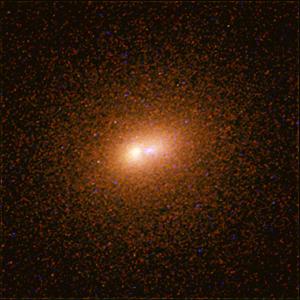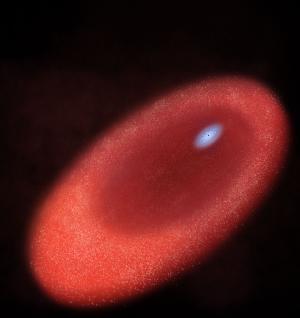Blog
Out of the Blue
13 June 2014
 NASA, ESA and T. Lauer (NOAO/AURA/NSF)
NASA, ESA and T. Lauer (NOAO/AURA/NSF)The image above is of the very center of the Andromeda galaxy. If you look in the middle of this image, you’ll see a smudge of blue. As first demonstrated in an article in Astrophysical Journal, the central blue region is a collection of about 400 young blue stars.1 They are concentrated in a region about a light year across, and are moving at about 1,000 km/s.
 NASA, ESA, and A. Feild (STScI)
NASA, ESA, and A. Feild (STScI)We know these stars are so densely packed and moving so quickly because they are orbiting Andromeda’s supermassive black hole. But what’s particularly interesting about these stars is that they have short lifetimes on a cosmic scale, so it is unlikely that just happened to appear around Andromeda’s core. What is more likely is that they formed near the core, and that Andromeda’s core undergoes cycles of stellar formation to produce this kind of blue cluster.
It is an interesting insight into the region near a supermassive black hole, and one we don’t fully understand. What would drive this kind of cyclic star formation in the region? Perhaps the answer will appear sometime out of the blue.
Bender, Ralf, et al. “HST STIS spectroscopy of the triple nucleus of M31: two nested disks in keplerian rotation around a supermassive black hole.” The Astrophysical Journal 631.1 (2005): 280. ↩︎